ALDO CIBIC | Creating an Environmentally Responsible Generation of Designers
—“Everybody should do something.”
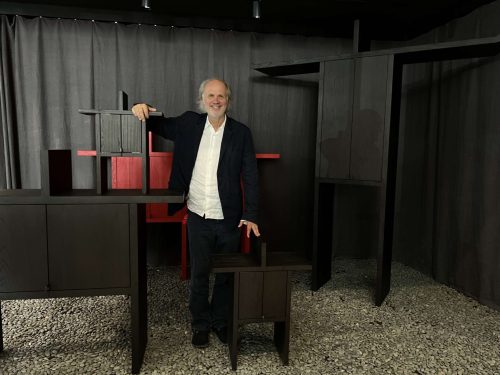
Growing up in Italy at a different time, tackling the climate crisis wasn’t an issue for Aldo Cibic. The acts of care came naturally: not overusing water, wearing more layers during wintertime instead of relying on the heater—simple habits that go a long way. It was later in life that the Memphis Milano founding member started to observe, read, and notice the massive problem faced by planet Earth.
And the motivation, says Cibic, came from teaching at Shanghai’s Tongji University, which made him realize that it was on him to instill awareness of environmental issues in the young generation within his reach. “If (a young designer) starts doing things that one day becomes a problem for the environment, it is not good,” says Cibic, “but it’s not their fault because you have to help them understand. They need to be educated.”
Leading up to Shenzhen Creative Week 2023, Aldo Cibic shares with us the projects he’s working on with his students, thoughts on eco-friendly practices and the role of beauty in sustainable design, and ways to reduce waste for designers and consumers. Keep scrolling to read the interview!

Where would you say your eco-consciousness and focus on sustainability came from? Did you have an experience that shifted your mindset, and what prompted you to actively promote sustainability?
We live in a historical period where we are overwhelmed by waste. We have the problem of climate change. We have so many problems—just read the newspaper. And you are part of your time. And in my field, you feel, very heavily, the responsibility of behaving well, of not being offensive to the environment. So everybody should try to do the best they can, related to what they’re doing in their lives. It’s a shared responsibility for everyone. Nothing more than that.
I’m in Shanghai. I’m teaching at Tongji University. You’re more motivated when you are supposed to be an educator, dealing with the young generation and making this young generation more sensitive to the issue. A lot of work has to be done because the school is the first place where you can address this awareness. When you see all the deliveries, imagine all the things that they become. They become painful waste. When you read of the ocean full of plastic or the fish or the birds dying for our bad behavior, you should be moved by the idea that everybody should do something.
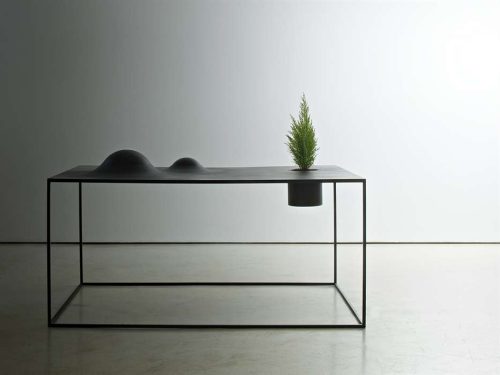
At which stage do you begin to think about eco-friendly ways and materials for your creation? Does it come naturally with your ideas, or do you figure out environmentally responsible solutions for your ideas afterward?
When I experiment with something formal that becomes a precious piece that is not mass production, I’m more interested in the creation than in sustainability because there are a few pieces that will never become trash. But in moments where I do something that can become trash, I’m more focused on discovering materials and understanding how it doesn’t become a problem.
The T Family project you featured during Material_S last year was produced using repurposed wood, which reflects your continuous effort to promote environmental protection. Is there any new sustainability project that you have in the works?
I’m doing an investigation with some students on which materials from nature—like bamboo, hemp, and others—will not be a problem with intense use and which ones will be. I would like to see all the results of the world. The big issue is which materials are scalable and can become something really reliable for producing things. This is also something very important for the school because, in my opinion, a young designer who’s going to get into mass production is a potential “criminal” because if he starts doing stuff that becomes a problem (for the environment) one day, it is not good. But it’s not their fault because you have to help them understand. They need to be educated. They need to have programs that are more effective. On one side, making them more aware and, on the other side, getting them to be actively researching and designing in an alternative way.

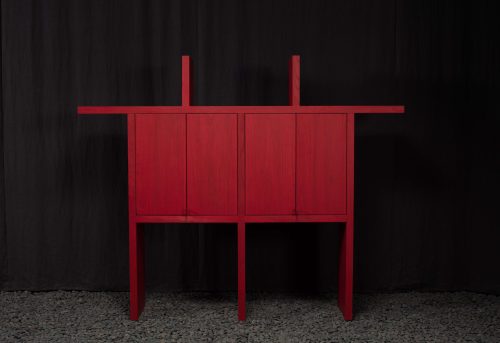
I’m also dedicating a relatively big part of my life to a project for which I had the idea maybe 18 years ago. It’s in a new community in the countryside, in Jiading District, with someone who owns a big, super organic farm in a farmers’ village of 30, 40 houses. I’m bringing the students there. The idea of this place is to become an example of how to work on very clean and traditional agriculture but, at the same time, also see all the natural materials, how to do the restoration and repurpose the waste from nature to make new materials that can perform for some typology or design. For example, the owner of the farm tried to, instead of using cement, use sticky rice together with burnt wood for the bricks to make a wall. He’s doing tests.
It’s fascinating how many different things can come out of the idea of finding new materials. An art collector friend in Italy founded Museo Della Merda—The Shit Museum—with furniture, art objects, and even tableware from cow dung. An institute established by a very rich woman in Camargue, Southern France, creates beautiful things from algae and sea salt. They do a lot of research on sustainable ways of living and sustainable materials. This has to be the future.
Your apartment in Shanghai has been featured by numerous media platforms. Could you share your ways of implementing sustainable design and lifestyle in an urban city?
First, that is a small house, which already means it’s consuming less. Second, the floor was recycled wood, reclaimed wood from old houses. The furniture was my furniture, including the bed. I also didn’t use any toxic material in general.
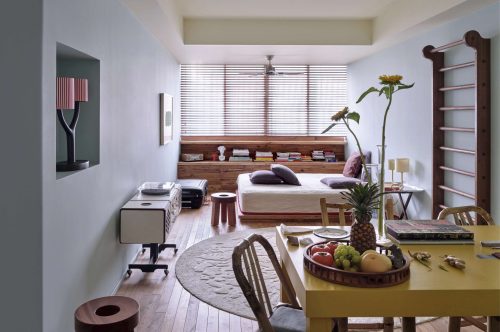
In your opinion, what are some necessary steps to move toward more environmentally responsible practices for both designers and consumers?
It is something for which you have to do research. You need to do research to see how to apply the materials, to be in touch with the companies, and to see how you can work with them. You should actively be pushing this to happen.
It also depends on the lifespan of the design. If I make a house or an apartment interior, it doesn’t become bad trash. If it has a short life, it becomes real waste, and that’s not so great. If you think of a fair and the booths at a fair—the fair should be aware of this because, in the end, there’s a large quantity of trash, such as carpets you cannot recycle.
Do you think the new generation of designers in China is becoming more aware of the environment and their responsibility? How do you influence & instill this awareness in your students, and what are the most important design values you want them to possess?
Yes, absolutely. Sometimes you’d see a young designer making something without having any clue about this, and you get a little concerned. But on the other side, I’m seeing young designers making very interesting things in the right direction.
There’s a friend in Jingdezhen who’s working with the waste of ceramic, and she’s putting in a lot of effort to make this material available. She’s already done commercial work for Starbucks and fashion brands using these recycled tiles, which is very nice. China sometimes seems to be a little late compared to what’s happening around the world, but you know how China is—it can be late today and number one tomorrow. It’s fascinating for me to be here because the reaction is very quick.
My students are fantastic. And I don’t like to use this word, but students are innocent. So if you trust them and they trust you, many nice things can happen. And what is always nice about the student is that they give back. Life is taking and giving; you cannot just take. If you only take, you can’t go on. And students give back more than you believe. This is the fascinating thing about working with students.
There are two issues that I’m very concerned about at the same time. One is how you are more careful of the footprints of what you do. But I do not like the idea that the footprint allows you to make something that is ugly. If it’s ugly, it’s not sustainable. A famous quote from Dostoyevsky says, “beauty will save the world”. So I made a joke, saying, “sustainability and beauty in design will save the world.” Beauty is very important for our future.
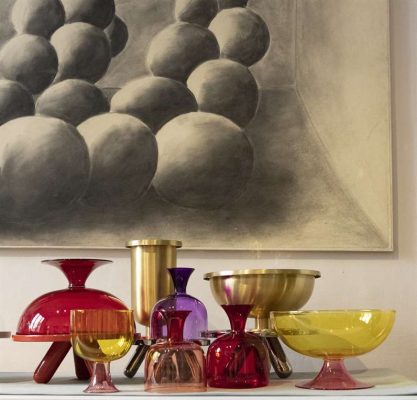
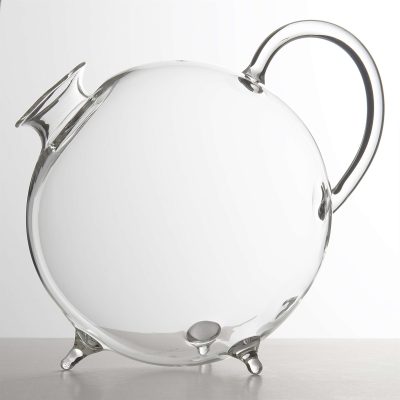
You have to be careful of what you use, but at the same time, you need to do something that can be inspiring, can be functional in a nice way. For example, all these technology-oriented systems. If you think of Apple, for example. Steve Jobs spent one year studying calligraphy. If he hadn’t studied calligraphy, maybe Apple wouldn’t be what it is today. [The brand] is more beautiful and interesting than any other company. There is a humanistic idea in it. Technology alone is not enough.
Having that humanistic component makes you feel responsible at different levels, not just functionally responsible or responsible on the performance level. There’s consciousness. The idea of how we want to live and what we’re leaving for future generations.
